NHSN Senior Naturalist, James Common, shares an update on your summer ladybird sightings from across the North East
Since our last North East Ladybird Spot update back in June, you’ve continued sharing sightings of ladybirds across the length and breadth of the North East. In total, you’ve now logged an incredible 2,021 sightings this year alone. This means that in total, local naturalists have now shared 3,545 records as part of the project so far – an outstanding achievement!
From common and abundant species to scarcely seen specialists such as Adonis’ and 18-Spot Ladybirds, your sightings continue to reveal new information about ladybirds in the North East. This information will be used by experts at the UK Ladybird Survey to assess the distribution, expansion and in some cases, decline, of these colourful invertebrates across our region.
As we head into autumn and a chill in the air sends our ladybirds scurrying off to their overwintering sites, now seems like a good time to reflect on what you’ve been noticing as part of the survey so far.
Yellow ladybirds
A medium-sized ladybird found in a surprising range of habitats from woodland to agricultural fields, this year, you’ve shared 109 sightings of the 14-Spot Ladybird. One of the last species to emerge each year, sightings of these eye-catching insects began in April and early May before increasing as the summer advanced. Separated from the 14-Spot based on its circular as opposed to square spots, many of you have also observed the dazzling 22-Spot Ladybird throughout the summer. A species at the Northern edge of its UK range here in the North East, this ladybird feeds on mildew and is most often encountered on infected plants.
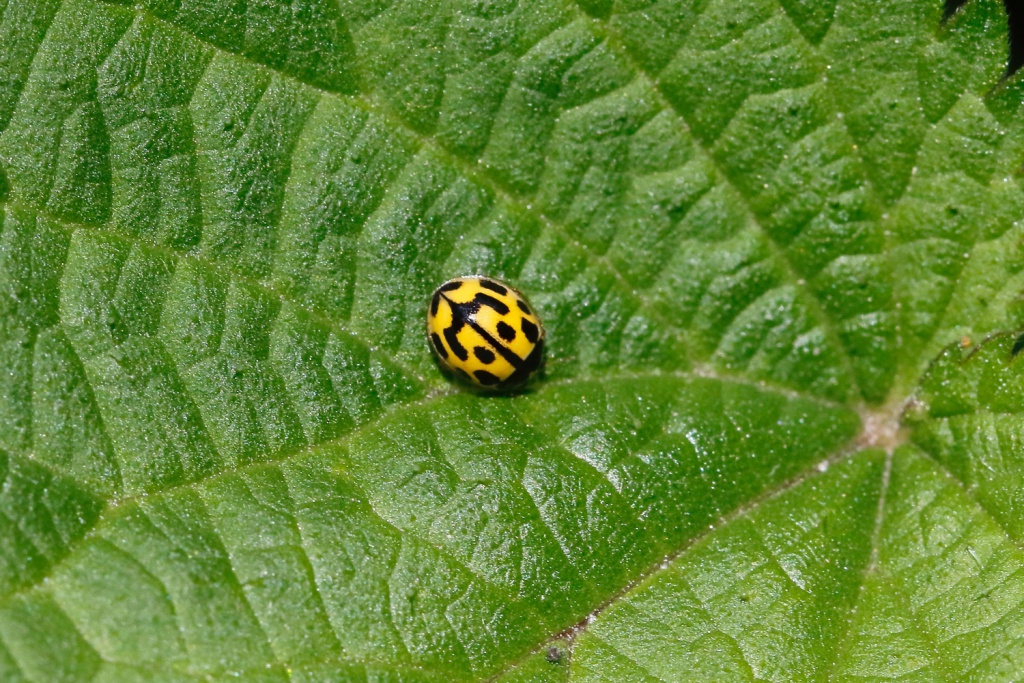
14-Spot Ladybird © Chris Barlow
Perusing pines
One of the great things about the 2022 North East Ladybird Spot has been the number of records shared of conifer specialist ladybirds – species seldom encountered on day-to-day walks. Thanks to your hard work, this has been the best year yet for sightings of the elusive 18-spot and Striped Ladybirds. Britain’s largest ladybird, the Eyed Ladybird, has also been recorded a fantastic 31 times this year while for the first time, the brown but beautiful Larch Ladybird makes into your top ten most recorded species. Smaller than most conifer specialists, you’ve also observed the tiny Pine Scymnus at a whole host of new sites.
Checking conifers for ladybirds can be very productive throughout autumn and winter – why not watch a short video sharing all you need to know to get started?
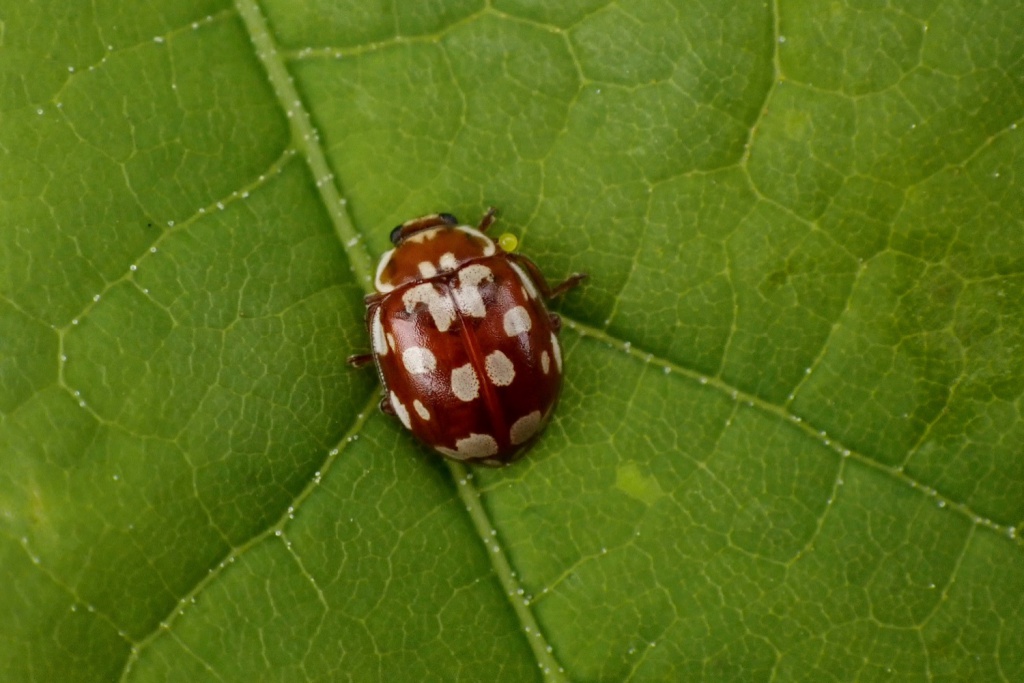
18-Spot Ladybird © Joe Dobinson
Into the uplands
Ladybirds in the uplands can be hard to come by but this year, we’ve seen a noticeable increase in records from remote areas of our region. Heather Ladybird, a species recorded for the first time as part of the project this year, continues to be seen at known sites in Northumberland while local naturalist, Louise Hislop, added what is only our second record of the rare Hieroglyphic Ladybird, this time in County Durham. Kidney-Spot Ladybird too has turned up at several upland sites while elsewhere, you’ve been filling in gaps on the map by recording ladybirds across areas of Teesdale and inland Northumberland.
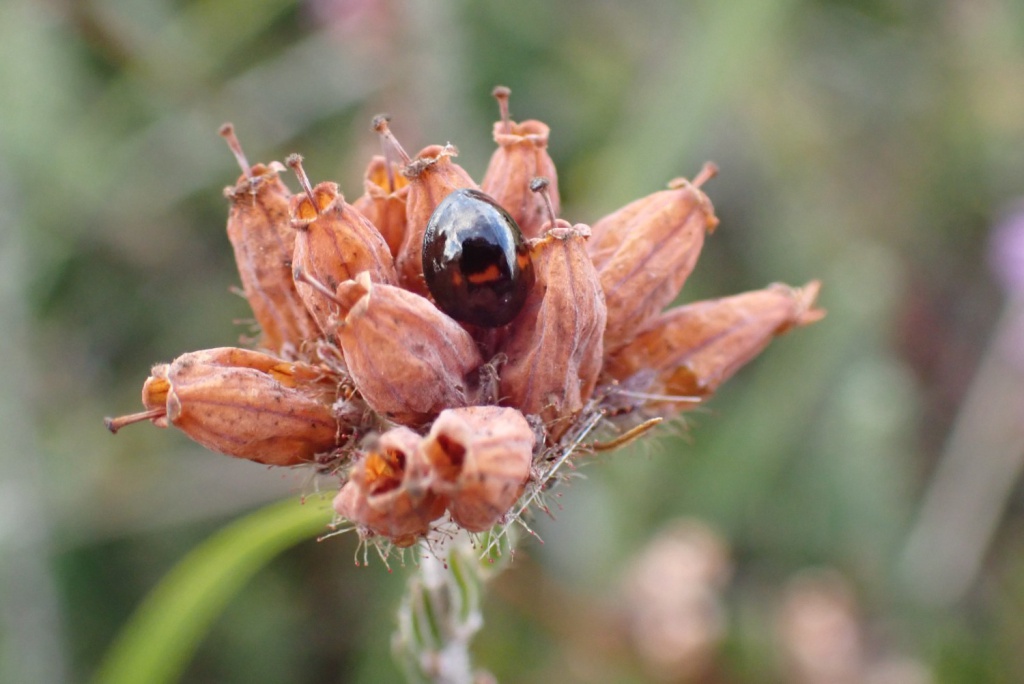
Heather Ladybird © James Common
Your most recorded species
The stereotypical ladybird so many of us recognise from storybooks, it will come as no surprise to learn that the 7-Spot Ladybird is the most recorded species across the North East this year. Large, red and easy to identify, you’ve spotted this species in a whole manner of places from parks and urban gardens to remote hillsides and even within dense woodland. Worryingly, the non-native Harlequin Ladybird comes in a close second with 351 sightings. Although seemingly confined to urban centres, this species is almost certainly increasing in our region and will likely be found further afield as the project continues in future years.
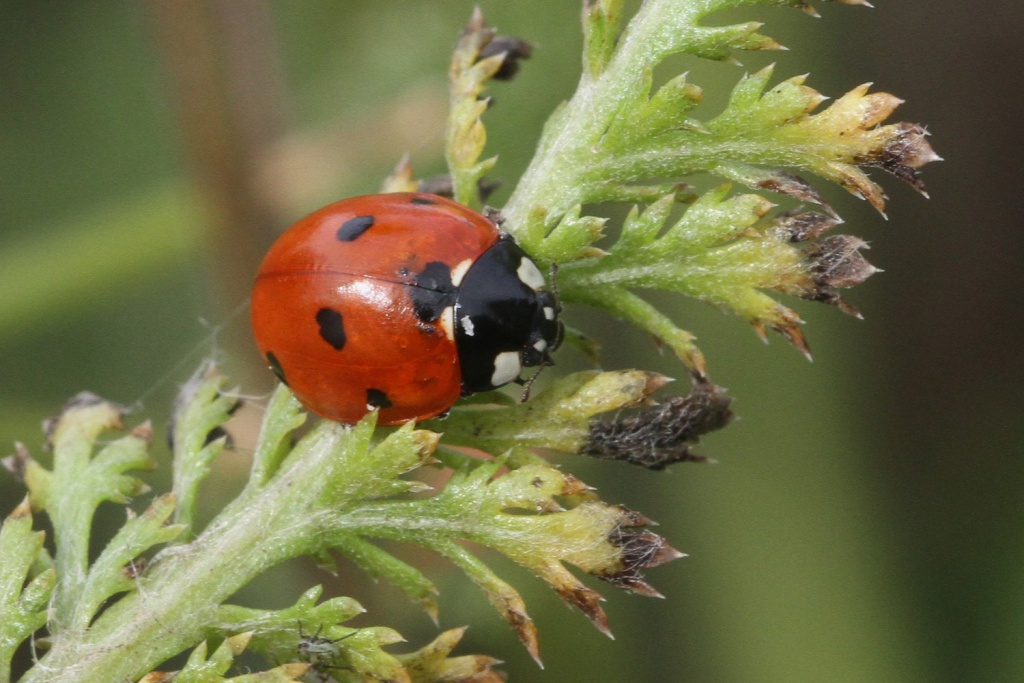
7-Spot Ladybird © David Jarema
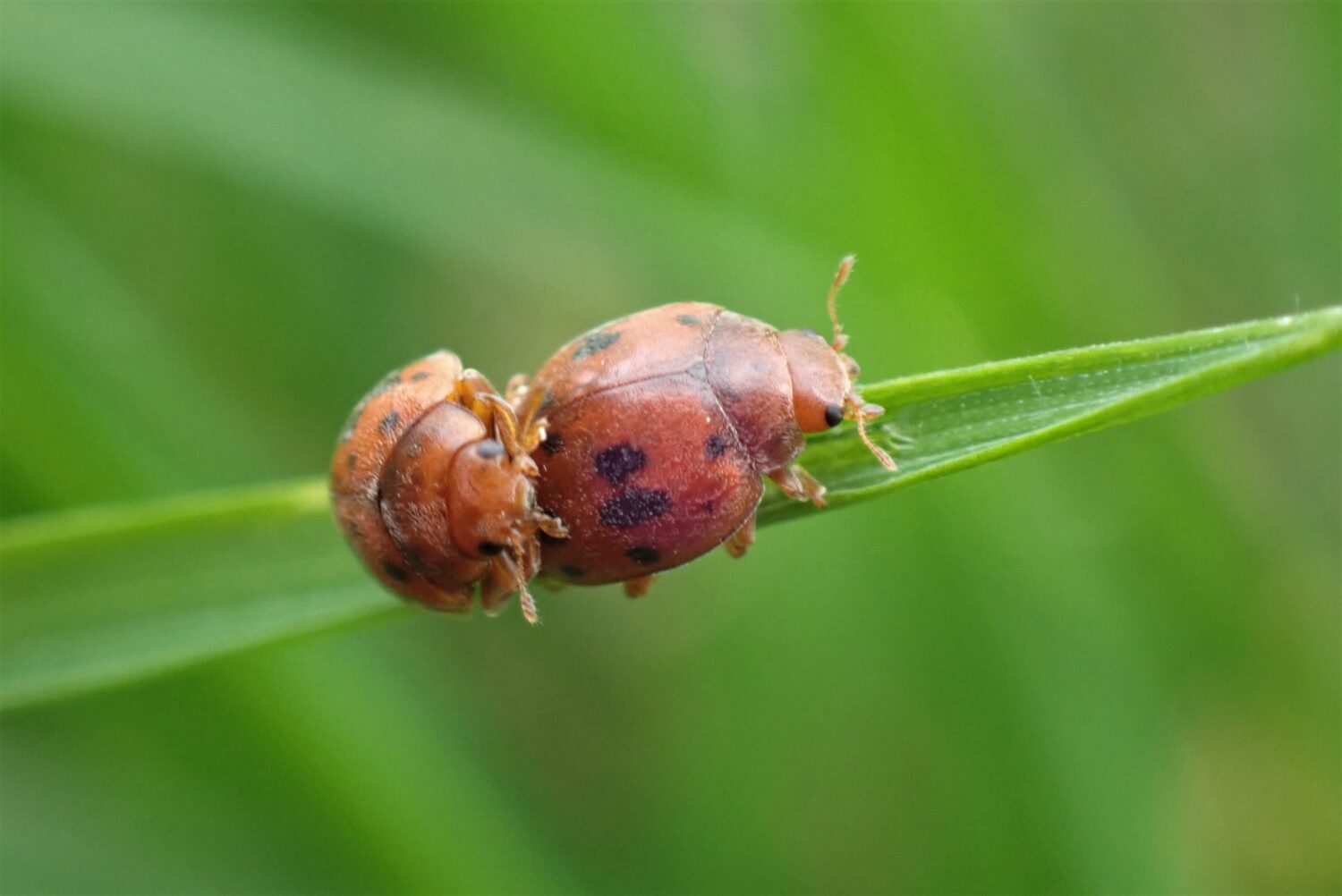
Join the North East Ladybird Spot
Ladybirds are some of the North East’s most beautiful invertebrates, but there are still important questions to answer about their distribution.
Join the North East Ladybird Spot from the Tees to the Tweed to increase knowledge and understanding of local ladybirds.
Taking part is easy and everyone can help: simply spot a ladybird, take a photo and share your sighting.